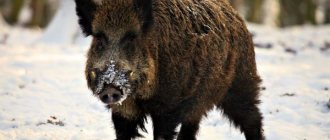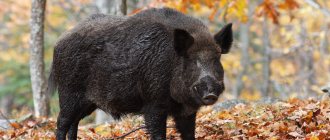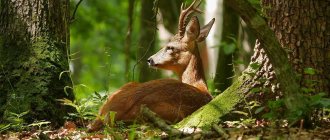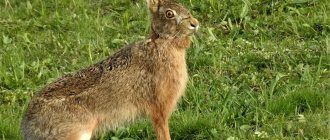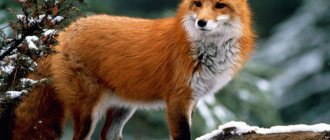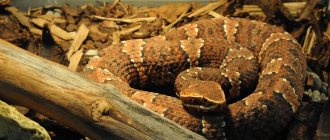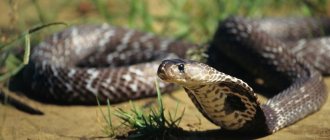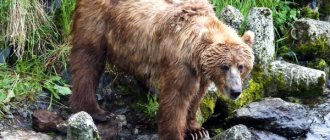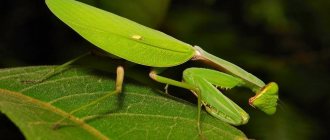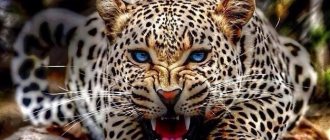- October 14, 2018
- Hunting
- Elena Motrenko
Wild boar (boar) is a large wild animal, a desired trophy for many hunters. When engaging in such fishing, you need to be extremely careful, since the animal is very strong and quite cunning. Killing a boar is not an easy task. Those hunters who succeeded consider the victory over him one of their most significant achievements.
The boar is very smart. His tactic is to lure a person into hiding, and then surprise him from hiding.
Boar: description
The wild boar is a cloven-hoofed mammal, or rather a wild pig. What distinguishes it from a typical animal is its huge head and long muzzle, shorter body, and thick, high legs. The boar's ears are erect, pointed and long.
This animal is large. His height is more than one meter. Weight – 150-300 kilograms. The wild boar is an excellent swimmer. He succeeds well in this matter and can cross an entire lake. Females are slightly smaller than males. In total, there are nine species of wild boars.
The boar looks rather clumsy, but, in fact, it is a fairly agile animal.
The voice that a boar makes is similar to the sounds characteristic of a pig. He also squeals and grunts. But the wounded boar endures suffering in silence. Even affected females and piglets do not squeal when wounded.
The lifespan of a boar in the wild is about ten to twelve years, and in captivity it can live up to twenty.
How to draw the head (muzzle) of a boar
First a pencil sketch. Here it is important to indicate the direction of the muzzle, how the middle line runs, and it is necessary to show the lines of the eyes and ears - they are approximately parallel.
Now let’s clarify the contours of the muzzle - it’s very cheeky! And we outline a long nose.
We draw a patch (hmmm... more like a whole ruble), draw the eyes - they are set somewhat slantingly:
Now we’ll equip the mouth with fangs, draw bristly ears - and here’s the drawing of the boar’s muzzle in front of you:
Habitat
Boars can be found in any part of the world. They prefer deciduous and mixed forests with shrubs, as well as swampy areas. In such places they have the opportunity to feed themselves. An important condition for the habitat of these animals is the presence of a reservoir. They do not like areas with a lot of snow. They do not tolerate severe frosts and may die.
The fact that a wild boar lives in the forest can be established by the presence of traces of the animal, scraps of fur, and dug up earth. Its track is very similar to that of an elk, but is smaller in size. The prints of the small lateral toes are very clear and widely spaced. The footprint has a round shape. Below, see a photo of a wild boar in the forest.
Boar food
The boar is not a gourmet or a picky eater. He feeds on any food he can find. The more satisfying it is, the smaller the area of territory that wild boars need in the forest to live and obtain food. They love berries, fruits, acorns, roots, insects, small animals, and chicks. They can happily feast on poisonous snakes - their poison is not scary for the wild boar. Plant foods predominate in the animal's diet.
The boar's diet depends on the time of year: in spring - young greens and roots; in summer - berries, leaves, grass. In autumn, the wild boar eats fruits, mushrooms, nuts and seeds. And in winter it is content with mosses, lichens, and branches.
In the forest, the wild boar hunts small animals, and obtains roots and some insects by digging the ground with its fangs, which can reach a length of up to 22 centimeters.
The boar smells food at a distance of more than five kilometers and at a depth of more than 25 meters. Noticing the amazing ability of these animals to quickly find food, people began to use them to search for expensive mushrooms - truffles.
Often fishermen find their nets empty after a visit from a wild boar.
In extreme cases, an animal can eat its relative if he is dead or wounded.
A boar needs 3–6 kilograms of food per day. Over the summer, the animal gains ten to fifteen kilograms of fat. This helps him survive the winter.
The biggest pigs
Among pigs, domesticated relatives of the wild boar, individuals of record sizes have been recorded, such as the Big Bill boar from Texas, America, which weighed more than 1 ton and was about 3 m in length. On the way to the exhibition, he was injured and was euthanized. Such impressive dimensions even remained forever captured in the form of a stuffed animal.
The largest boar in the world was raised by a British farmer. With a specially selected diet and diligent care, he managed to bring the weight of Old Slot (that was the boar’s name) to 6 tons. Currently, this is an unsurpassed result.
Among pigs, domesticated relatives of wild boar, individuals of record sizes have been recorded
Another pig, Chun Chun, originally from China, cannot boast of such an unbearable weight, but still brought its owner the fame of one of the largest animals of this species in the world. His weight reached 900 kg with a body length of 2.5 m. Now the stuffed boar is in the museum.
The owner claims that he did not try to fatten his pet, Chun-Chun simply had an excellent appetite and good health, which allowed him to reach unique dimensions.
But wild boars live on pasture and it is difficult for them to grow to such sizes. On average, boars weigh 220-250 kg and have a length of 1.20 - 1.50 m. They have always been prey for people. Hunting wild boars is not safe, but it is very exciting.
Habits of a boar
Boars are cautious animals; they choose a secluded place. During the day they rest, hiding in the thickets and making themselves a cozy nest of branches and leaves.
In hot weather, these animals make themselves a “font” - a hole with water and mud. Despite their love for mud baths (this is how they escape the heat and insects), wild boars are quite clean animals.
In winter, wild boars shovel snow and lie down on fallen leaves.
Meeting a wild boar in the forest during the daytime is unlikely. But on cloudy and foggy days they can wander during the day.
At night, the active phase of life of these wild animals begins. They go out in search of food. In the forest, a wild boar moves through the thickets, following its sense of caution. Seeing any danger, the animal waits in cover.
The boar prefers to avoid people and their homes.
An adult boar leads a solitary lifestyle, while females form herds.
Boar behavior during the rut
Between December and January, wild boars begin their rut. The male finds a group of females and joins her. The herd consists of 20 - 100 individuals, headed by a female individual.
During this period, wild boars are extremely aggressive. If two males meet, a fight occurs between them. There remains a winner in the herd. The loser flees and unites with other exiled animals into a separate group.
During the period of competition for females, wild boars stop eating and only drink. During this time, they lose fat and develop numerous wounds.
During the rutting period, old boars form a kind of armor from the subcutaneous cartilaginous tissue, which performs a protective function during an attack. Only a bullet penetrates it.
In March - April, piglets appear. When raising young animals, females pose a great danger, as they are ready to rush if they see even the slightest threat to the offspring.
The mother feeds the cubs with milk for about 3.5 months. The young stay with her for up to 7 months. Usually only half of them survive to sexual maturity, the rest die.
The boar attacks, defends itself and digs the ground in search of food with its tusks. He strikes from the bottom up. Boars constantly sharpen their tusks by rubbing their upper and lower teeth.
If a boar is wounded, it poses a mortal danger. Under no circumstances should a hunter pursue a stricken animal.
Reproduction and raising of offspring
If domestic pigs are ready for procreation already in the first year of life, then their wild fellow pigs reach maturity much later. Male wild boars mate for the first time when they reach 4-5 years of age, and females are ready to breed at 2-2.5 years.
Mating season
The mating period for wild boars lasts for 2 months, and its seasonality depends on the climatic conditions of the different subspecies.
During the rut, single adult males begin to actively search for herds with mature females. Boars ready for breeding leave characteristic marks of saliva and urine on the ground, which serve as landmarks for excited artiodactyl cavaliers.
During the mating season, usually peaceful and friendly males become aggressive, and real tournaments take place between them for the right to own a female. Boars do not hesitate to use their formidable fangs, and after such battles, many males are left with bloody wounds on their bodies. The losing boar hides in the thicket of the forest, and the winner gets a harem of 2-3 females.
Boars in the forest, what to do?
When going into the forest, you need to remember safety precautions. The boar runs very fast and has enormous strength, so a meeting with it can end in disaster. According to statistics, more people die from wild boars than from sharks (ratio 12:10). There were cases when boars even killed a tiger.
This animal has poor eyesight, but has excellent hearing and sense of smell. Sensing someone approaching in the forest, the wild boar will try to avoid the encounter.
Humans are not part of the boar's diet. Therefore, you can expect an attack in special situations. Animals attack humans in case of danger to themselves or their offspring.
Let's find out how to scare away a wild boar in the forest if you expect its close presence. To do this, it is recommended to sing loudly, make sounds, and rustle clothes while moving. The animal will hear and try to hide.
Origin of the species
Beginning hunters are interested in how the cleaver differs from the wild boar. In fact, they are the same animal. Individuals are distinguished by age as follows: the first year is a piglet, the second is a gilt, the third and further is a male cleaver, and the female becomes a pig.
The name comes from the root word “sech”, meaning “battle”. According to the classification, wild boars belong to the order of artiodactyls; they are not ruminants. This indicates their relationship with hippopotamuses. In some countries the animal is called a boar.
Domestic piglets were one of the first animals to be domesticated by humans. And today pig farming is considered the most important sector of the economy. The cleaver is larger than domestic piglets. He is not going to become a friend of a person.
Unforeseen collision
If all precautions have been taken, but a dangerous surprise still occurs, you need to follow some rules to avoid consequences. What to do if you meet a wild boar in the forest?
Take into account a few of the most important techniques. You shouldn't run, you need to stay calm. The boar will smell the person and leave, not seeing the danger.
But if the boar is scared, angry, or you met him during the rutting period, or disturbed a female with piglets, then things are bad. When the animal attacks, nothing can scare it.
If a boar is angry, it knows no fear. And since the animal runs fast (30 km/h), it will catch up with a person in no time. Therefore, there is no point in fleeing from him. But he is not able to slow down or turn to the side. Therefore, the correct way out of this dangerous situation is to jump to the side. But this requires good skill. Few people have managed such a trick. If you manage to do this, you can consider yourself saved - the boar rarely comes back. If he nevertheless rushes a second time, you must again jump to the side and dodge until you reach the shelter.
There is no point in defending yourself, it will not bring results. A knife blow or shot must be very well aimed and aimed at the eye, neck or ear.
There is a safer option - climb a tree and sit there for a while. At first the boar will watch you below, but after a while he will leave.
